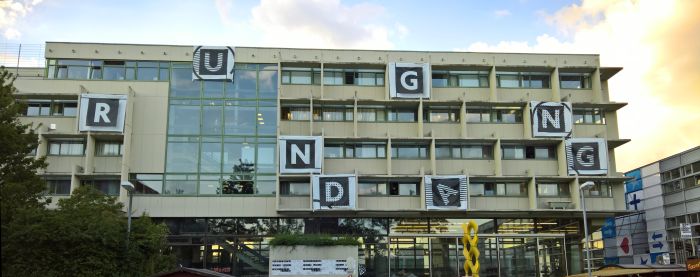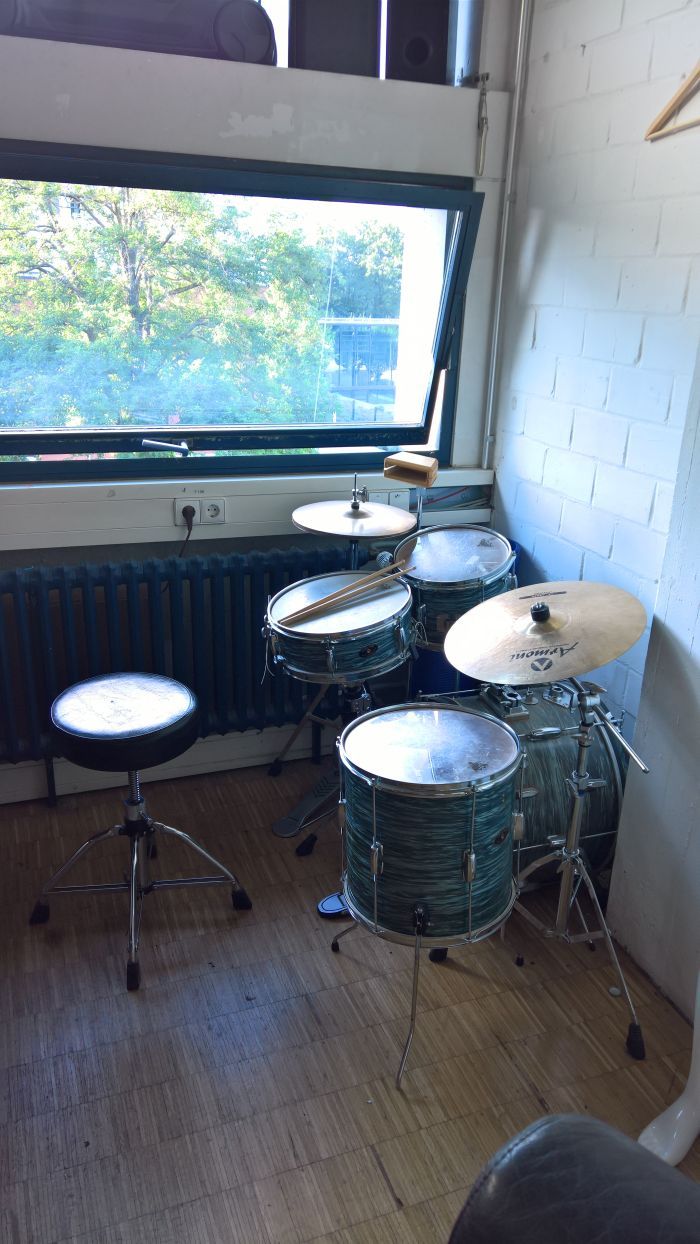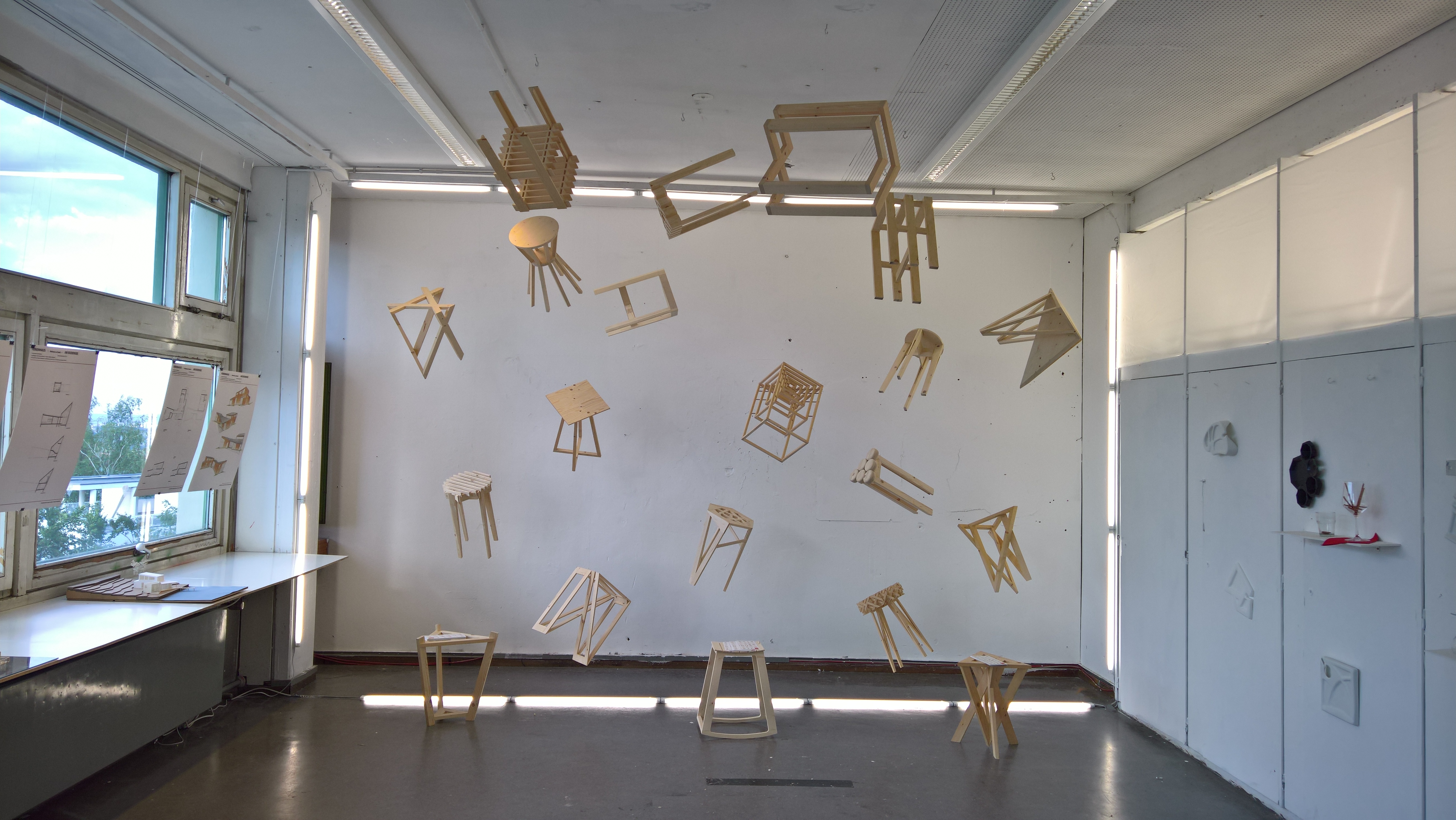#campustour 2017: Rundgang @ Akademie der Bildenden Künste Stuttgart, Germany
The 18th century forebearer of the Akademie der Bildenden Künste Stuttgart was established as a location “where the youth can be cultivated, likes plants in a nursery”
While nurseries can produce strong and noble trees, flowers with the most exquisite blossoms and hardy perennials that keep on contributing to their environment, they are also often home to unstable experimental hybrids and provide the perfect breeding ground for parasites and disease.
How well the current Akademie der Bildenden Künste Stuttgart nursery is being maintained could be assessed at the 2017 Rundgang summer exhibition……
Akademie der Bildenden Künste Stuttgart
Tracing its history back to 1761 and the Academia artium Stuttgardensis, the origins of the contemporary Akademie der Bildenden Künste, ABK, Stuttgart can be found in late 19th, early 20th century and for all in the Königlichen Kunstgewerbliche Lehr- und Versuchswerkstätte – Royal Applied Arts Teaching and Experimental Workshop – an institution which sought to combine arts and crafts for the benefit of local industry. An important figure in the development of the Lehr- und Versuchswerkstätte was the architect and designer Bernhard Pankok who not only served as the school’s director but designed the school building sited at Am Weißenhof 1. And thus the first building on a site which would come to stand as representative of the new world to which the school sought to contribute.
In 1941 the Lehr- und Versuchswerkstätte merged with the Stuttgart Art College to form the Akademie der Bildenden Künste Stuttgart, an institution which only really became properly established post-war. and which amongst its Professors has boasted the likes of, and amongst many, many others, Willi Baumeister, Herbert Hirche and Arno Votteler. Still sited high above Stuttgart on the Killesberg, albeit not only in Pankok’s original building but also in two newer, 1960s buildings, the ABK Stuttgart today offers courses of study in a wide range of creative disciplines including architecture, visual arts, stage and costume design as well as industrial design.
Akademie der Bildenden Künste Stuttgart Rundgang 2017
The ABK Stuttgart Industrial Design 2017 Rundgang presentation was without question the most complicatedly designed exhibition we have ever viewed.
As in ever.
Be that in a college or museum context. And we have viewed like 8 million exhibitions.
The ABK had however luck and got us on a good day, on any other day we would have turned on our heels; however, the sun was shining, there was no barking from the dog, no smog, and Momma cooked a breakfast with no hog. It was a good day.
Rather than present the results of the various semester classes together, in one space, as a unity, the works from the various classes were intermixed throughout the workshops. Meaning the visitor was sent on a form of treasure hunt to find all the works from a particular class.
Or at least we were sent on a treasure hunt.
For as far as we could make out we were the only ones actually going methodically, class for class, through the presentation, everyone else appears to have been viewing it workshop for workshop. Which we’re sure says something, quite a lot?, about us. We’re just hoping its positive.
From the five semester courses, one in particular caught our attention, which isn’t to say that the courses Fashion/Uniform, Coffee Powder, Ceramics, Thing 5.0 or indeed the various self-initiated projects presented, weren’t interesting; rather is to say that none of the works spoke to us beyond being examples of student semester projects, examples of how the ABK attempts to train designers for the coming world, to nurture the seedlings in their charge. And as such important. And interesting.
In contrast the project LED produced a couple of results which in addition to being examples of student semester projects, didn’t just speak to us, but screamed.
LED
Staged by and with Professor Winfried Scheuer, LED, as the name all but implies, asked students to create an LED lamp. Something one or the other did in a delightfully thought provoking manner. Whereby we must state that the project Kumo by Baoyi Li & Manuel Diegruber was the only project we failed to find on our treasure hunt. And therefore we must assume was the project which would have most appealed to us. Which is in no way to detract from the following…..
Bulb Stool by Do-hurn Park & Melissa Acker
Bulb Stool isn’t the first object to integrate a stool with lamp, but there is/was something particular pleasing about the way Do-hurn Park & Melissa Acker have achieved the mix, for all the impression we get that the lamp is the primary focus: the stool, while in no sense looking like an after thought, does look like something which developed from the idea rather than something which was there at the beginning. A state of affairs we thoroughly approve of. While the handle around which the cable can be wound owes more than a passing nod to Konstantin Grcic’s Mayday Lamp, the almost party light-esque LED chain inside the body creates a very casual, playful, character yet one which is appropriate for home and office.
If we’re honest we still remain a little uncertain as to why you would want to sit on a lamp, where the actual benefit in terms of illumination is to be found. But that is probably more a failure in terms of our cognition rather than an actual real problem.
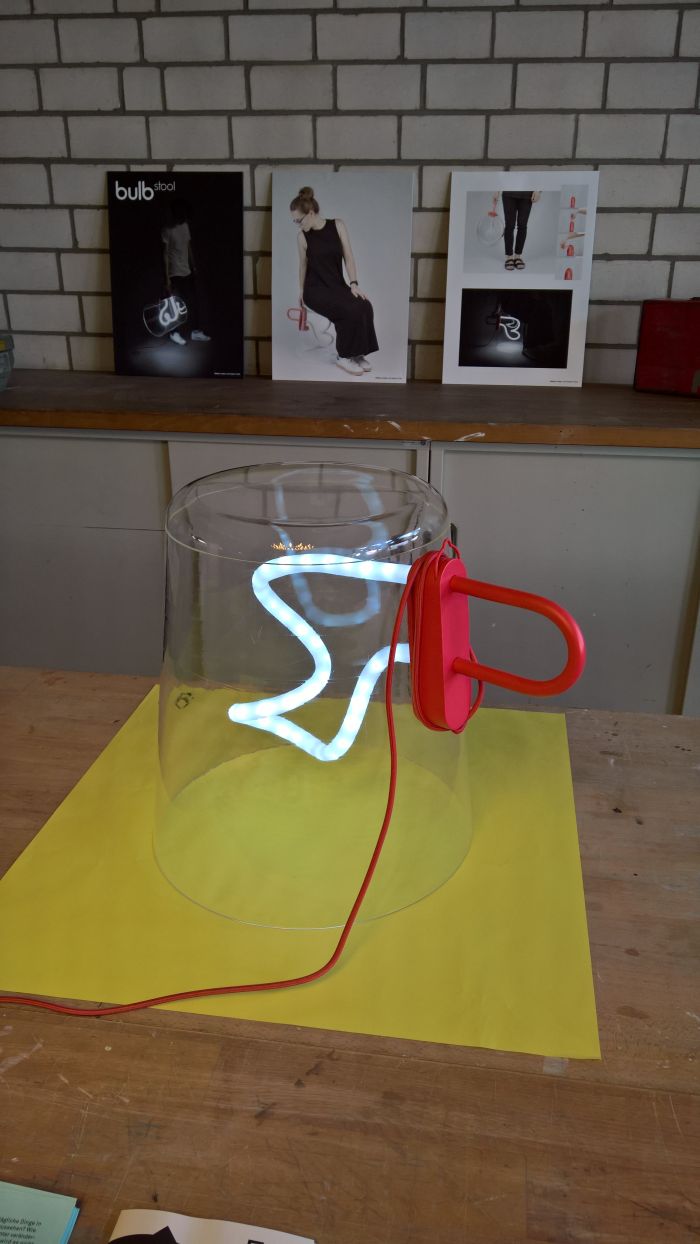
Bulb Stool by Do-hurn Park & Melissa Ackert, as seen at the Akademie der Bildenden Künste Stuttgart Rundgang 2017
Acoustic Light by Nils Körner & Charlotte Zeh
Particularly in an office context lighting with acoustic properties make perfect sense. Not least in terms of simplifying the interior design. We have no idea if Acoustic Light by Nils Körner & Charlotte Zeh actually works, but certainly approve of the approach they are taking and the solution towards which they are working. For all the floor based version intrigues. And would do even without the acoustic element.

Acoustic Light by Nils Körner & Charlotte Zeht, as seen at the Akademie der Bildenden Künste Stuttgart Rundgang 2017
c1 by Simon Gehring & Sascha Dos Santos Coelho
Whereas the edge lit LED lamp is very popular in terms of tacky ornaments and fire escape signs, it hasn’t really established itself in domestic lighting. Or perhaps better put, hasn’t yet. Of late we’ve seen an increasing number of edge lit concepts that makes us think it is very much a typology in development. And while we would never claim to be particularly taken with the “unfolding cellophane roll” optic chosen for c1, as a project it does very neatly highlight what is possible with such technology and for all what can be achieved with well considered etching.
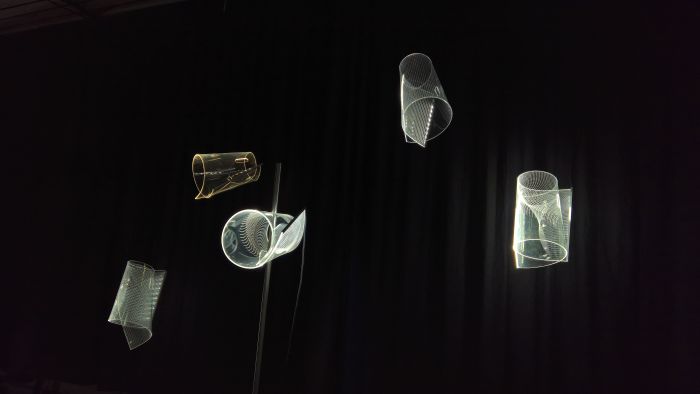
c1 by Simon Gehring & Sascha Dos Santos Coelhot, as seen at the Akademie der Bildenden Künste Stuttgart Rundgang 2017
Ménage à Trois by Hans-Peter Lutsch & Alexander Schulz
Proving that a lamp stand can be so much more than simply a static support Ménage à Trois transforms the stand into a central charging point: in addition to the main lamp Ménage à Trois also allows for the charging of a torch and a versatile, mobile hanging lamp for garden, veranda or balcony. Yes, it does all look a bit untidy when the all the lamps are charging; however, the “make do” optic plays this down, indicates it is to be expected.
Which isn’t to say it isn’t sophisticated, is to say the sophistication comes from the functionality, not the appearance and much like that artistic friend of yours who always seems to have the same clothes on and seems incapable of brushing their hair or cutting their finger nails, yet can speak eloquently and engagingly on any subject while their crystal blue eyes sparkle, Ménage à Trois can be set in any location without fear of causing offence.

Ménage à Trois by Hans-Peter Lutsch & Alexander Schulzt, as seen at the Akademie der Bildenden Künste Stuttgart Rundgang 2017
Sitting – From Idea to Object
One of the regular first semester courses at the ABK Stuttgart is Sitting – From idea to object which challenges the students to produce a stool in one day from a single 4.50 meter long length of wood. Every year the same, yet every year different and every year more about challenging the students creativity and technical capabilities that about the final result.
Full details on the Akademie der Bildenden Künste Stuttgart can be found at www.abk-stuttgart.de
Tagged with: #campustour, Akademie der Bildenden Künste Stuttgart, Stuttgart
